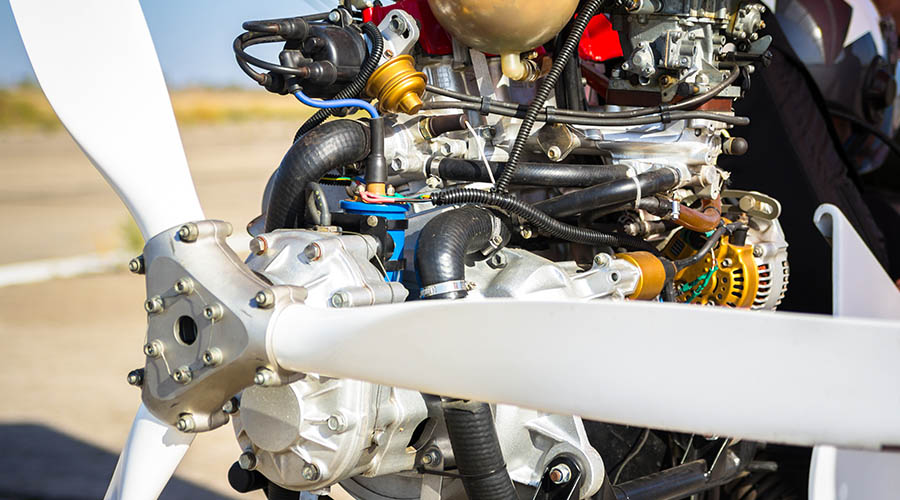Technological advancements are paramount for the Automotive and Aerospace industries

Digital technologies in Automotive and Aerospace industries are transforming manufacturing. It’s time for manufacturers to create the best digital supply chains to support this.
Technological advancements and digital transformation are increasingly changing the automotive industry. Modern consumers want full digital connectivity.
Automotive manufacturers understand that they must transform the way they work to meet consumer demands. The focus today is on connected, autonomous and electric vehicle capability, and automobile manufacturers are being driven beyond automation to a more advanced form of digitised smart factory to meet the demands of each automobile.
The Aerospace industry also faces unprecedented disruption on multiple fronts. Supply chains are facing increasing volatility, new competitors are targeting the sector and technology is impacting across the value chain. Aerospace manufacturers that have already embraced digital transformation through technologies such as AI, data and automation are surging ahead achieving up to four times improvement on their digital investments. However, only the top 19% are achieving significant returns on their digital investments.*
At the recent Manufacturing Made Smarter Automotive and Aerospace Supply Chain workshop, KTN in partnership with Innovate UK, ADS Group and the SMMT Industry Forum explored some key challenges and opportunities for digital technologies to escalate innovation across the Automotive and Aerospace industries. Some of the key themes that came out of the workshop included: improving trust as a key enabler of adoption; developing strategies to engage the SME community; creating synergy for new product development across aerospace and automation and better OEM collaboration.
Trust issues are a key barrier for adoption
Trust should be is something that needs to be front and centre when thinking about the wider ecosystem. Organisations across the sectors need to consider how we can improve regulations and standards via trust. The ownership of intellectual property on data systems and the authenticity of the data are all elements to consider. As an industry, we need to find mechanisms to manage the data we feed into our systems.
Trust is key in terms of how the data is used. Clear principles are required to manage the data, for example creating a charter for suppliers to sign outlining how they will use the data. This will ensure protection for both customers and suppliers. Also, we need to give suppliers a choice – they shouldn’t be mandated to share data if they don’t want to.
Data governance and trust was something that Skywise (CAA Aviation’s app for news, safety alerts, consultations, rule changes and airspace amendments) discovered on their journey. The biggest concern for them was around cybersecurity as users upload their data on a system that they govern. There is a need to build people’s trust in systems where cybersecurity is a major concern.
SME community engagement
Challenges arise around how to engage SMEs in the journey into digitalisation throughout the industry. Often SMEs don’t see the value in Industry 4.0 adoption. As an industry, direction is needed to remove the barriers to entry when OEMs ask new suppliers to onboard themselves. A common, consistent language is needed so everyone is working from the same base.
Support is also needed to upgrade the capabilities of SMEs and explore challenges from an SME perspective; areas such as return on investment for SMEs to get involved in digital transformation projects. Industry bodies such as Automotive Council, AGP etc could potentially form part of the solution as the key representative for the sector.
ISCF has demonstrated that cross-sector collaboration is possible and valuable to all sectors, so lots of learning can be extracted for application across the Automotive and Aerospace industries.
Creating synergy for new product development
Aerospace lags other industries in terms of their strategies for new product development. We heard from Airbus who emphasised that they struggle with new product development and implementation and look to the automotive industry for guidance. Guidance and expertise are needed across the sector to demonstrate how to use digital tech to bring high-quality products to market, faster.
Effective collaboration with OEMs to align with digital technology opportunities
Collaboration is key to ensuring the industry manages effective digital collaboration. A great example was the excellent collaboration around UK ventilator challenge where industry players including Rolls Royce, McLaren, Airbus and MTC got together and quickly established brand new supply chains and new ways of working. We saw technology collaboration through tools such as Hololens, which was used to capture the hidden factory. Great examples of collaboration around the manufacture of customised masks using extended supply chains across manufacturers, suppliers and cybersecurity firms also exist. This mission orientation innovation demonstrates that it is possible.
The big question is, how do we see the learning from this type of collaboration transfer into other areas? As we mentioned earlier, SMEs don’t see the value in Industry 4.0. Can platforms be put in place to offer them worthwhile opportunities to get involved?
The funding available via the ISCF Manufacturing Made Smarter competition could be used to tackle some or all of these challenges. Businesses should consider where they could innovate to make the biggest impact; developing more informed customer data analytics, collaboration, scaling digital technologies or data visualisation across supply chains.

